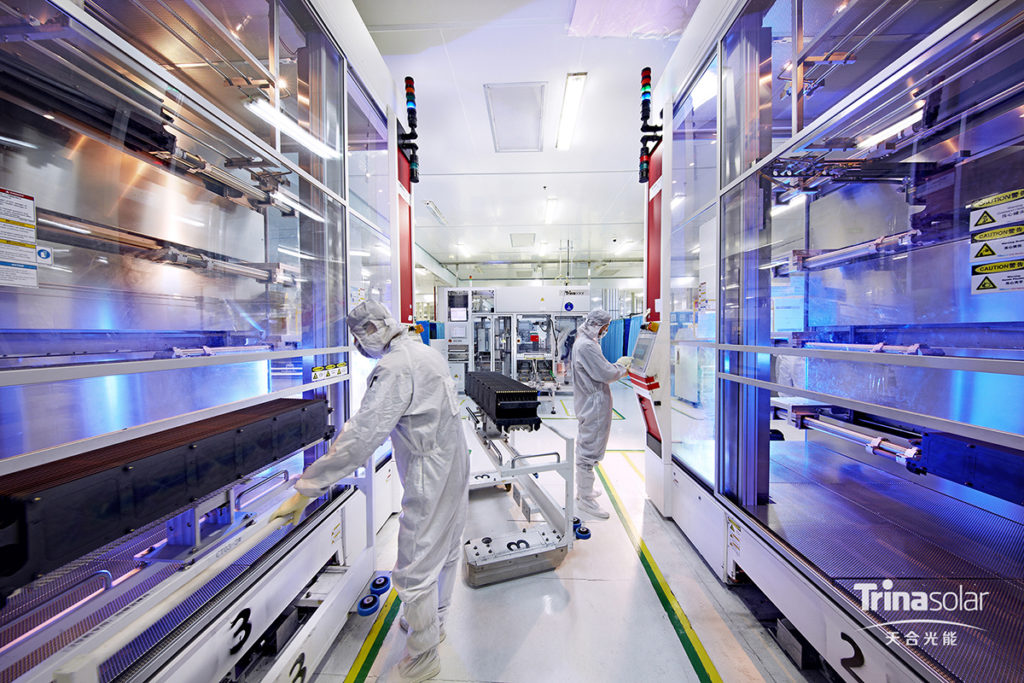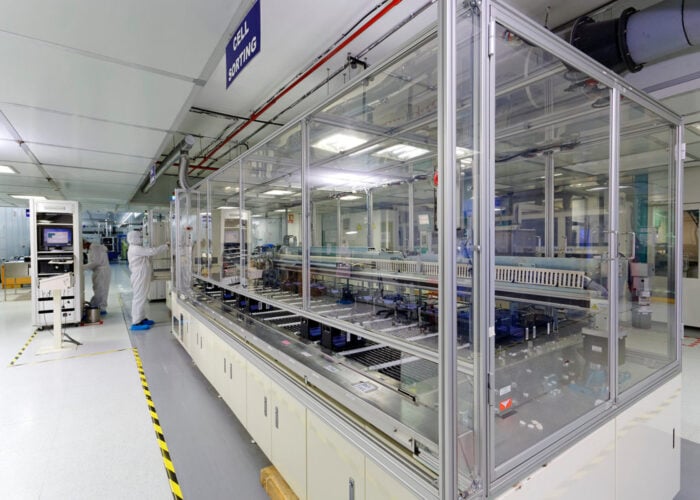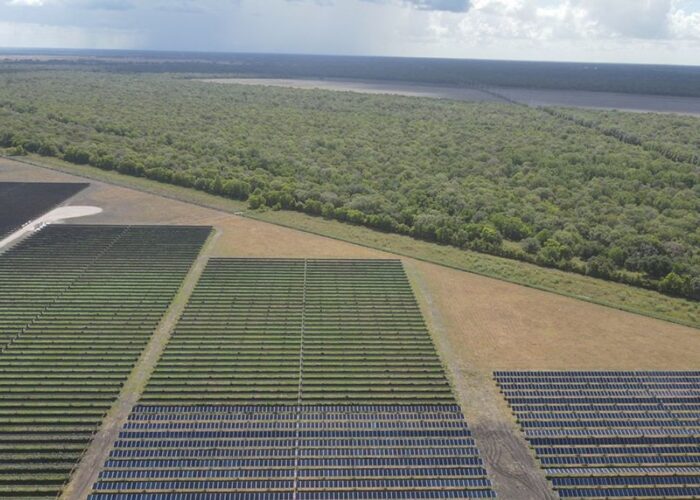
Chinese solar manufacturer Trinasolar has reportedly achieved a 30.6% perovskite-silicon tandem module efficiency.
The module efficiency was certified by the Fraunhofer Institute for Solar Energy Systems (ISE) in Germany on a large-area, 1185 cm² tandem module. According to the Trinasolar, this is the first time a solar company has passed the 30% threshold efficiency for tandem modules.
Try Premium for just $1
- Full premium access for the first month at only $1
- Converts to an annual rate after 30 days unless cancelled
- Cancel anytime during the trial period
Premium Benefits
- Expert industry analysis and interviews
- Digital access to PV Tech Power journal
- Exclusive event discounts
Or get the full Premium subscription right away
Or continue reading this article for free
On top of that module efficiency record, the company has also reached a power record of 829W for its large-area, 3.1 square meter perovskite-silicon tandem module. This latest milestone increases Trina’s previous record by 21W; it developed an 808W perovskite-silicon tandem module earlier this year.
In similar news, Chinese solar manufacturer Aiko has reached a 24.4% module efficiency for commercially produced modules.
Announced at SNEC 2025 in Shanghai, the company specialises in back contact (BC) technology and said it has already deployed 24.4% efficiency Comet 2U 660W modules in Japan.
“Our 24.4% module efficiency isn’t just a technical achievement — it’s a commitment to bringing the best solar technology into the real world,” said Chen Gang, Chairman of AIKO.
Solar efficiency records in 2025
Other industry players have posted new efficiency records with other technologies in months. Researchers from the Helmholtz-Zentrum Berlin (HZB) and Humboldt University Berlin achieved an efficiency of 24.6% with a copper indium gallium selenide (CIGS)-perovskite tandem solar cell in February 2025. The result was certified by the Fraunhofer Institute for Solar Energy Systems, increasing the efficiency record from 24.16% to 24.6%.
Chinese solar manufacturer Risen Energy posted a 30.99% conversion efficiency on a heterojunction (HJT) silicon-perovskite tandem solar cell earlier this year, too. This was certified by the Chinese National Photovoltaic Product Quality Supervision and Inspection Center.
On the module front, Trinasolar set a 25.44% module efficiency record with a solar total passivation (TOPAS) heterojunction (HJT) PV module earlier this year. The results were independently confirmed by the PV calibration laboratory (CalLab) at the Fraunhofer Institute for Solar Energy Systems in Freiburg, Germany, and set, at the time, a record for PV modules based on a crystalline silicon solar cell with front and back contact structure.





